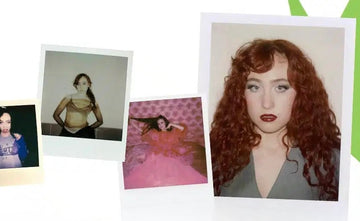Mastering Exposure: Brighten or Darken Your Polaroid 600 Photos with Ease
przez Дашка Шипунова na Jul 28, 2025

Introduction
As a passionate Polaroid photographer, I know the thrill of capturing a moment in time with the iconic instant film. However, getting the perfect exposure can sometimes be a challenge, especially when working with the Polaroid 600 camera. Fortunately, your Polaroid 600 comes equipped with a handy exposure control lever that allows you to easily brighten or darken your photos to achieve the desired look.
In this comprehensive guide, we'll dive deep into the art of exposure control and share practical tips to help you master the Polaroid 600 exposure dial. Whether you're a seasoned Polaroid enthusiast or just starting your analog photography journey, you'll learn how to take control of your camera's exposure settings and create stunning, well-exposed Polaroid images every time.
Understanding Exposure and the Polaroid 600 Exposure Dial
Exposure is the amount of light that reaches the film in your Polaroid camera, and it's a crucial element in determining the final look of your photographs. Too much light can result in overexposed, washed-out images, while too little light can lead to underexposed, dark and murky shots.
The Polaroid 600 camera comes equipped with an exposure control lever, located on the front of the camera, that allows you to adjust the amount of light reaching the film. This exposure dial is a powerful tool that gives you the ability to fine-tune your Polaroid photos and achieve the perfect exposure.
Adjusting the Exposure Dial: Brightening or Darkening Your Polaroid 600 Photos
Using the exposure control lever on your Polaroid 600 is a straightforward process. Here's how to adjust the exposure to brighten or darken your Polaroid photos:
- Brightening Your Photos: If your Polaroid images are turning out too dark, simply move the exposure control lever towards the white arrow. This will increase the amount of light reaching the film, resulting in a brighter, more well-exposed photograph.
- Darkening Your Photos: Conversely, if your Polaroid photos are coming out too bright and overexposed, move the exposure control lever towards the black arrow. This will decrease the amount of light reaching the film, creating a darker, more balanced image.
It's important to note that the maximum exposure control on the Polaroid 600 is approximately 2/3 of an f-stop, so you won't have an extreme range of adjustment. However, this subtle control can make a significant difference in the final look of your Polaroid photos.
Factors Affecting Exposure in Polaroid Photography
While the exposure control lever is a powerful tool, it's essential to understand that there are other factors that can influence the exposure of your Polaroid photos. Familiarizing yourself with these elements will help you make more informed decisions when adjusting the exposure dial.
Film Speed (ISO)
The film speed, or ISO, of your Polaroid film is a crucial factor in determining the exposure. Polaroid 600 film typically has an ISO of 600, which means it is more sensitive to light than lower-speed films. When using a higher-speed film, you may need to adjust the exposure dial towards the darker side to prevent overexposure.
Lighting Conditions
The available light in your shooting environment can greatly impact the exposure of your Polaroid photos. Bright, sunny conditions will require less exposure, while low-light situations may necessitate more exposure. Pay attention to the lighting conditions and adjust the exposure dial accordingly.
Subject Distance
The distance between your Polaroid camera and the subject can also affect the exposure. Subjects that are closer to the camera may appear brighter, while those farther away may appear darker. Adjust the exposure dial to compensate for changes in subject distance.
Mastering Exposure: Practical Tips and Techniques
Now that you understand the basics of the Polaroid 600 exposure control, let's dive into some practical tips and techniques to help you master the art of exposure in your Polaroid photography:
Experiment and Test Your Settings
The best way to get a feel for the exposure control on your Polaroid 600 is to experiment. Take a series of test shots, adjusting the exposure dial in small increments and observing the results. This will help you develop a better understanding of how the exposure dial affects your Polaroid photos and allow you to fine-tune your settings for different shooting scenarios.
Keep a Shooting Log
As you experiment with the exposure dial, it's a good idea to keep a shooting log to track your settings and the resulting images. This will help you identify patterns and learn from your experiences, making it easier to replicate successful exposures in the future.
Bracket Your Exposures
Bracketing is a technique where you take multiple shots of the same scene, adjusting the exposure dial slightly between each frame. This allows you to capture a range of exposures and increases your chances of getting the perfect shot. When bracketing, try adjusting the exposure dial in 1/3 or 1/2 stop increments to see the subtle differences in your Polaroid photos.
Utilize the Exposure Compensation Feature
Some Polaroid 600 cameras, such as the Polaroid 636 Close Up, feature an exposure compensation dial or button. This allows you to make more precise adjustments to the exposure, often in 1/3 or 1/2 stop increments. Experiment with the exposure compensation feature to fine-tune your Polaroid photos and achieve the perfect exposure.
Consider the Subject and Lighting
When adjusting the exposure dial, always consider the subject of your photograph and the lighting conditions. Bright, high-contrast subjects may require less exposure, while low-light scenes may need more. Pay attention to the highlights and shadows in your frame and use the exposure control lever to balance the exposure accordingly.
Develop Your Instincts
As you continue to shoot with your Polaroid 600 camera and experiment with the exposure control, you'll start to develop a better instinct for how to adjust the exposure dial. Trust your intuition and don't be afraid to make bold adjustments to the exposure to achieve the desired look for your Polaroid photos.
Caring for Your Polaroid 600 Camera and Film
In addition to mastering the exposure control, it's essential to properly care for your Polaroid 600 camera and film to ensure the best possible results. Here are some tips to help you maintain your Polaroid gear:
Cleaning and Maintaining Your Polaroid 600 Camera
Regularly clean the lens and rollers of your Polaroid 600 camera to prevent dust and debris from affecting your photos. Use a soft, lint-free cloth to gently wipe down the camera components, and be sure to store your Polaroid camera in a cool, dry place when not in use.
Storing and Handling Polaroid 600 Film
Proper storage and handling of your Polaroid 600 film is crucial to ensure the best possible image quality. Keep your film cartridges in a cool, dry place, away from direct sunlight and heat. When loading the film into your camera, be gentle and avoid exposing the film to light before it's ready to be used.
Protecting Your Polaroid Photos
Once your Polaroid photos have developed, it's important to protect them from damage. Store your Polaroid prints in a cool, dry place, away from direct sunlight and heat. Consider using photo sleeves or albums to keep your Polaroid photos in pristine condition.
Conclusion
Mastering the exposure control on your Polaroid 600 camera is a crucial step in becoming a skilled Polaroid photographer. By understanding how to use the exposure dial to brighten or darken your photos, you'll be able to capture stunning, well-exposed Polaroid images that truly capture the essence of the moment.
Remember to experiment, keep a shooting log, and develop your instincts for exposure. With practice and dedication, you'll soon be creating Polaroid masterpieces that showcase your unique artistic vision. Happy shooting!
For more information on using your Polaroid 600 camera and film, be sure to check out our website or shop our selection of Polaroid gear on Amazon.




